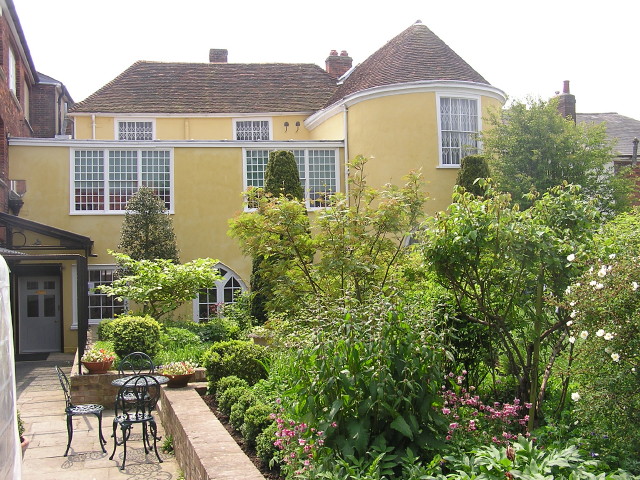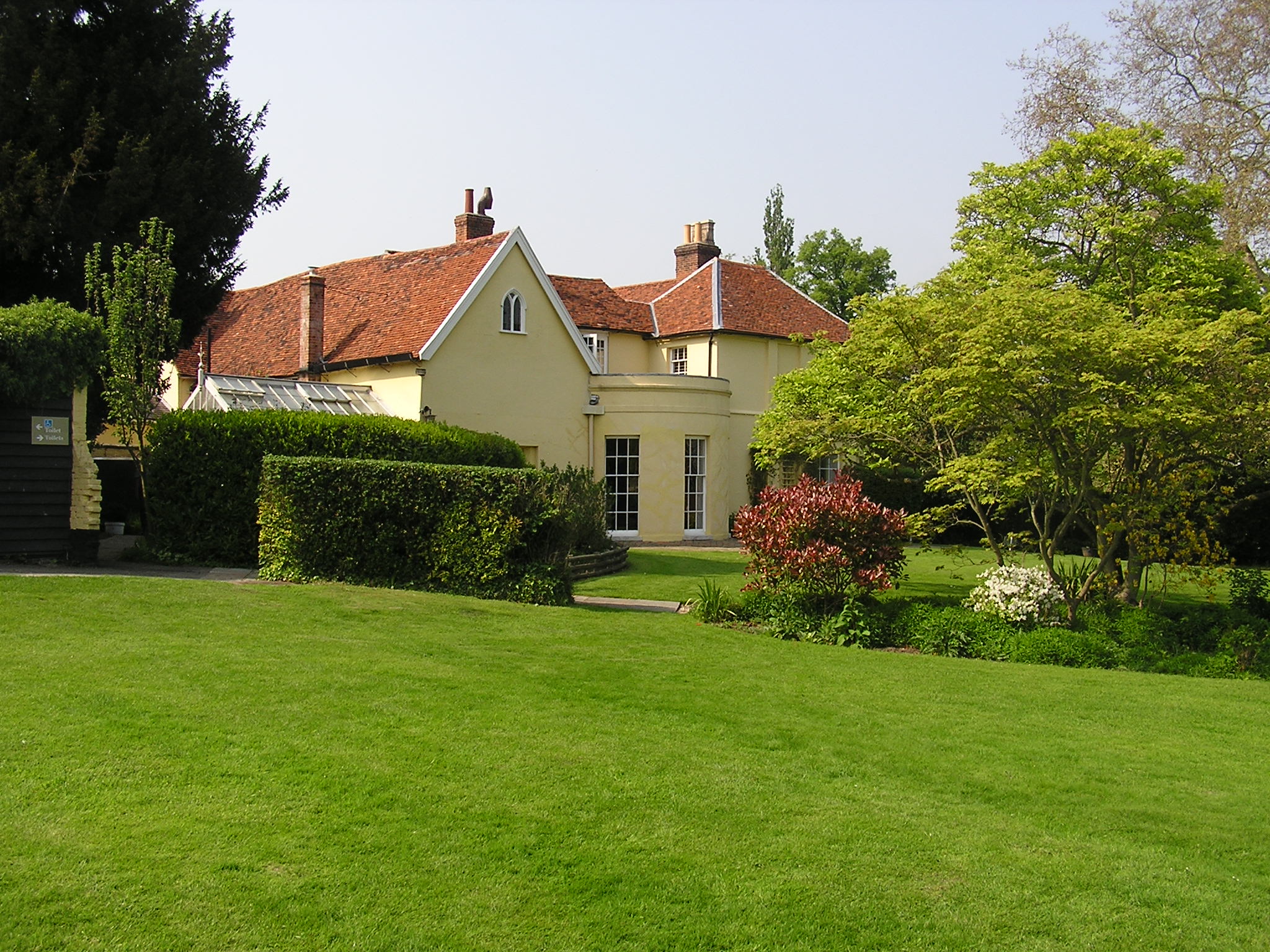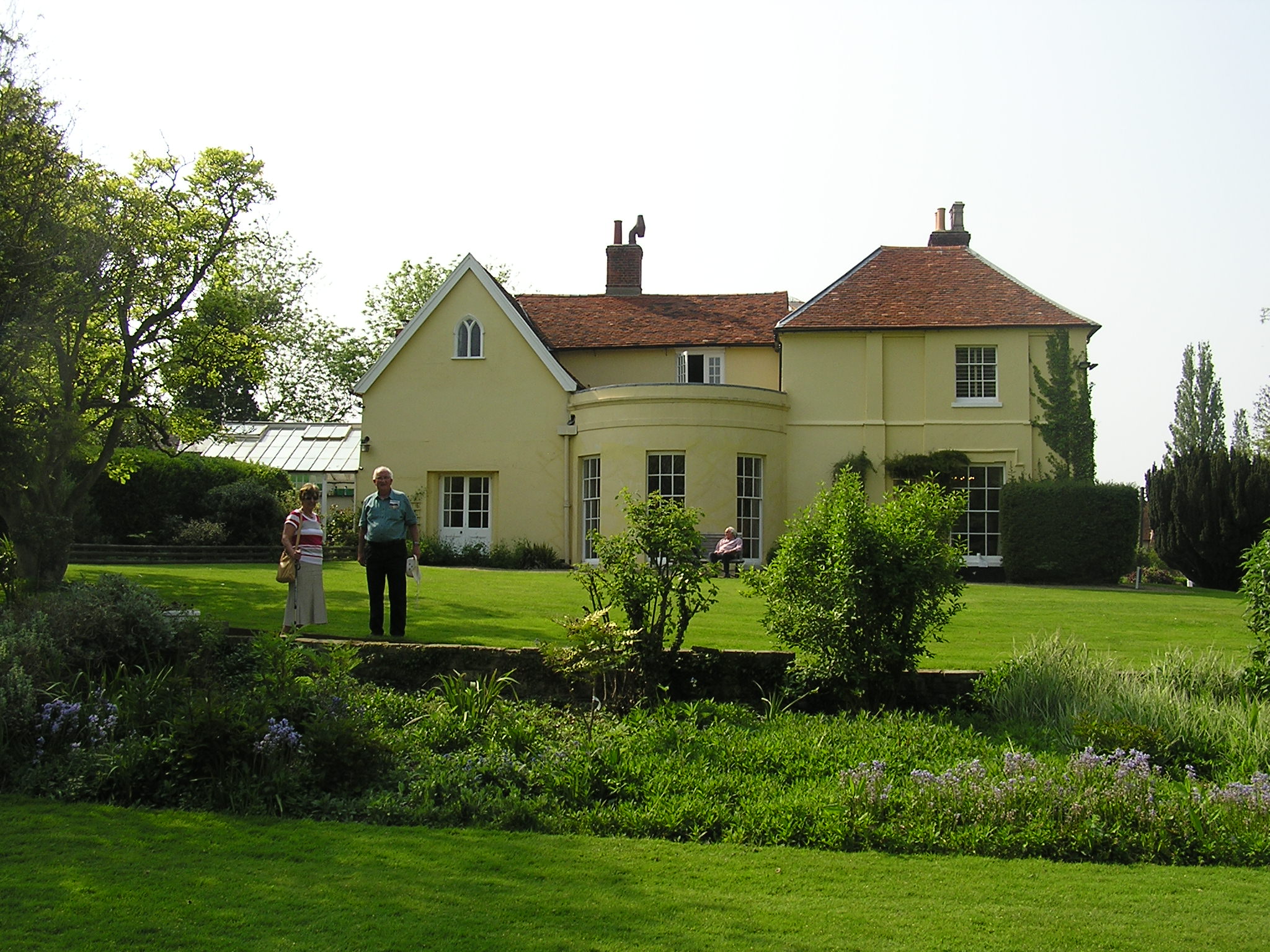Visit Reports
Suffolk Art Tour 23rd May 2012

It was a perfect summer’s day when our group of 48 visited Gainsborough’s House in Sudbury and Castle House in Dedham. On arrival at
the early 16th century timber-framed town house where Thomas Gainsborough was born in 1727, we were given an excellent introductory talk
by Jenny Anthill as we enjoyed a welcome coffee.
Thomas was the youngest of 12 children and his artistic genius was apparent at such an early age that he was sent to London at the age of
12 to study and start earning his living. We were told that he much preferred painting landscapes but he was forced into portraiture which
was much in demand by the gentry. So, he concentrated on portraits and especially conversation pieces with several members of the same
family painted, surrounded by their estate. To be near his fashionable clients, he moved first to Ipswich, then Bath, and finally London,
where he painted fashionable society and even the Royal Family.
We toured the five rooms in the house containing period furniture and a collection of his paintings. Some of his early Suffolk paintings are found in the Parlour whereas later portraits and landscapes, in the Arthur Essex Room, were painted when he was living in London and became a founder member of the Royal Academy.
There was time to stroll through the charming walled garden with its ancient mulberry tree, which would already have been a mature tree
when Gainsborough was a boy. Following an excellent finger food buffet lunch, we were driven through magnificent “Constable Country” beside
the River Stour to Castle House.

Sir Alfred Munnings, 1878-1959, lived in this light and spacious house in an area of outstanding natural beauty from 1919 until his death. The house has been preserved with its original furniture and personal possessions, superb paintings from throughout his career, which give a vivid impression of his diversity and brilliance.
His early works of East Anglian scenes, such as” The Timber Gill” and “ The Ford ” were reminiscent of Constable whereas “ Stranded”, showing two children in a rowing boat, his first painting to be accepted by the RA, was almost impressionistic. The two ladies in “The White Canoe” and the picnic group beside the river in “Taggs Island” reminded me of Renoir. I loved them. He is known for his horse paintings and there were many magnificent examples including groups of gypsy horses; fox hunting scenes and race horses at Newmarket.

Across the grounds we entered Munnings Studio, where they were running a most interesting film of his life. Film commentary was by David Evans, who, in our March lecture, had given us such a fascinating insight into that part of his life spent among the Newlyn group in Cornwall before the First World War. In the Studio, where his paint covered smocks hung on the wall, artist’s materials were spread around statues, racing silks and memorabilia; it felt as if he had just slipped outside.
He was clearly a difficult man but a brilliant artist and it was a great pleasure to see such a wide range of his prolific output on view in the peaceful and idyllic surroundings of his own home.
Before leaving everyone seemed to enjoy relaxing in the sunny garden with a cup of tea and homemade cake, discussing a really delightful day.
Carole Sugden June 2012
